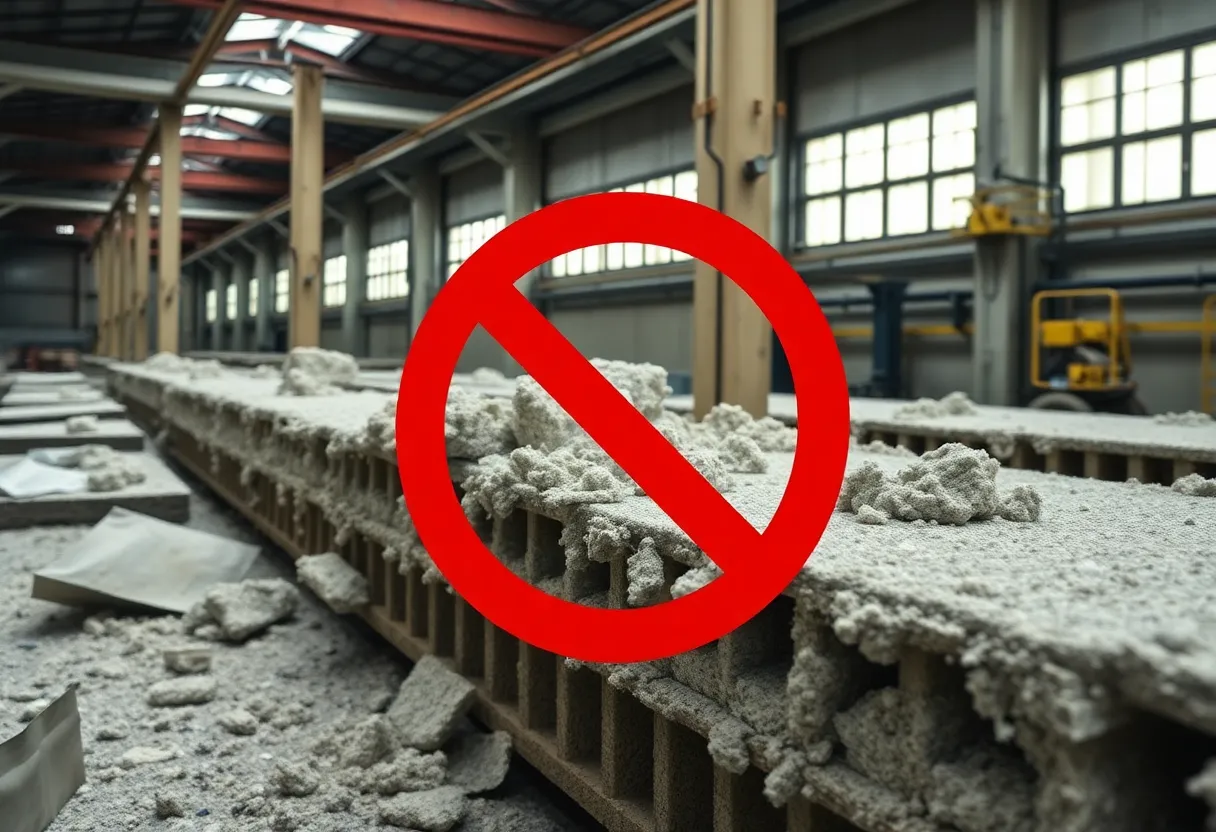News Summary
The EPA has finalized a ban on ongoing uses of asbestos, focusing on chrysotile, to protect public health from this harmful carcinogen.
Historic Asbestos Ban: A Turning Point in Public Health
The US Environmental Protection Agency (EPA) has taken a monumental step by finalizing a ban on ongoing uses of asbestos, marking a watershed moment in the fight against this notorious carcinogen. This decisive federal action, considered the first significant move against asbestos since 1989, aims to protect public health from the devastating effects of this harmful mineral.
Targeting Chrysotile: The Most Common Asbestos Type
The ban predominantly focuses on chrysotile asbestos, which is the only type still used and imported in the United States. Globally, chrysotile is the most prevalent form of asbestos utilized in various products, including aftermarket automotive brakes, linings, and gaskets. The EPA has consistently highlighted the brutal reality of asbestos exposure—accounting for over 40,000 deaths annually in the US alone, as it is linked to several deadly diseases, namely mesothelioma, lung cancer, ovarian cancer, and laryngeal cancer.
EPA’s Commitment to Public Health
The recent ban reinforces the EPA Administrator’s assertion that the scientific evidence strongly underscores the severe health impacts associated with asbestos. With auto manufacturers now facing a six-month transition period to cease using asbestos materials, this transitional phase is crucial for ensuring public safety. The chlor-alkali industry, which employs asbestos diaphragms for producing chlorine and sodium hydroxide, has been granted a more extended transition, allowing up to five years to switch to alternative methods. However, the American Chemistry Council has suggested extending that period to 15 years, cautioning against potential supply disruptions.
Legacy Concerns Remain
Despite the progress represented by this ban, the AFL-CIO has emphasized that the new regulation does not eliminate all types of asbestos fibers or tackle the substantial issue of “legacy” asbestos found in older structures and infrastructure. The EPA is currently working on evaluating these legacy uses and investigating asbestos-containing talc, which often accompanies asbestos in various minerals.
Bringing the US in Line with Global Standards
This new federal ban finally aligns the United States with over 50 countries that have already enacted similar prohibitions on asbestos. Under these new regulations, companies will be allowed a transition period of up to 12 years to completely phase out the use of asbestos in their manufacturing processes, depending on the specific facility’s needs. While the importation of other asbestos types continues to be permitted under prior EPA notification, the agency maintains the authority to deny these imports if deemed necessary.
The Lingering Legacy of Asbestos
The historical context surrounding asbestos regulation adds further complexity. A significant asbestos ban was instituted in 1989, only to be largely reversed by a court ruling in 1991, leading to inconsistent regulations at the state level. This has left many communities exposed to the dangers of asbestos, particularly from older buildings where exposure risks persist. The threat remains acute as the latency period for deadly diseases like mesothelioma can span up to 40 years, complicating the management of asbestos-related health hazards.
Understanding Mesothelioma
Mesothelioma, a particularly aggressive form of cancer, presents grave prognosis with a five-year survival rate of just 12%. Many diagnosed patients often face a life expectancy of only four to 18 months. Continued research into potential blood-based biomarkers and genetic variations is essential for early detection, which could significantly improve treatment outcomes for this devastating illness.
Future Risks and Ongoing Hazards
The ongoing risk of exposure due to older buildings, fires, and accidents involving asbestos-containing materials remains a pressing concern. With public health advocates emphasizing the importance of continued vigilance, the effects of past asbestos exposure will likely haunt generations to come. As the US embarks on this new chapter in asbestos regulation, the focus must remain on safeguarding future generations from the dangers of a material that has caused unimaginable pain and suffering.
Deeper Dive: News & Info About This Topic
HERE Resources
California Wildfires Ignite Hazardous Cleanup Challenges
Wildfires Ravage Los Angeles: The Hidden Danger of Asbestos Exposure
Retired Radio Engineer’s Asbestos Death Highlights Risks
Inquest Launched Following the Death of Former Factory Worker Linked to Asbestos Exposure
Great-Grandfather from Swindon Dies from Asbestos-Related Disease
EE Kilburn Store Closure Due to Asbestos Discovery
Asbestos Awareness Takes Center Stage in Parliament
Man Fined Over £20,000 for Illegally Disposing of Asbestos Waste
Minnesota Court Denies Company Immunity in Mesothelioma Case
Cholota’s Asbestos Case Continues to Unravel



















